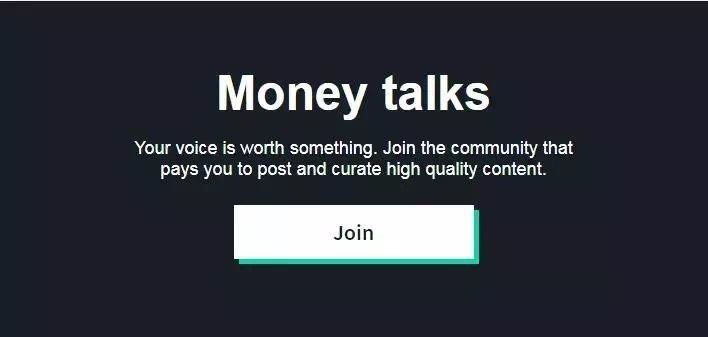The vast majority of the traditional social media and knowledge sharing sites are created by users, but the content creators are rewarded with little rewards, and the media have gained great economic benefits because they have a great deal of good content. And these giants, guided by the flow - driven economic benefits, will unintentionally manipulate and guide users' attention to content that may cause maximum clicks, what really good content, or what the user really needs, is marginalized because it can't attract enough eyeballs. Besides, publishing sensitive contents such as current affairs on these media is likely to be shielded. We have no right to express freely.
Is it possible to create a new social media, let content creators and users grasp the system's right to speak, and share the deserved economic benefits? Is it possible for such a social media to form a new regulatory mechanism that is managed by the community to eliminate vulgar and harmful content, and that there is no authority to interfere in the production and distribution of the content and inculcate some of our ideology and values at will?
Be on the cards! That's the rising centralization of new media on the block chain.
Steem is a block chain platform. Steemit is one of the social media built on this block chain. Because of its use of distributed technology, the community is managed by a democratic way, thus having the characteristics of the centralization of the media, and any force from the outside can not interfere with the operation of the system. At the same time, Steemit is voted by the community members to assess the content of the platform, the good content can be promoted, and the harmful content will be blocked. Content producers through the content of content, content consumers through their own evaluation and recommendation, investors by holding Steem certification and election of bookkeeper, different location but according to the predetermined rules to cooperate with each other, and have made a contribution to the community, and got the corresponding economic returns.
Next, we will explain in detail how Steem works.
- The three currencies of Steem :There are three currencies running in the Steem system, associated with each other .
-Steem currency: a basic encryption currency circulated in Steemit, which can be traded on the encrypted digital currency exchange and converted into other encrypted currencies or legal currencies.
-Steem Power (SP): a coin holder can freeze a certain number of Steem coins and freeze the Steem coins into SteemPower (SP). SP, if we want to turn back to Steem currency, it will take 13 weeks to complete the whole transformation process, which is "freezing". The money holders lose liquidity, but they get other benefits. By holding SP, the money holder becomes the shareholder of the Steem system, which can get 15% of the annual bonus of the new system. The greater benefit of the SP holder is that it can compete to become a system witness, that is, to see the witness, to get the account award by the account; in addition, the bearer with a different number of SP has different influence values, and can jointly decide the content creator from the Department to the content of the content on the Steemit. The amount of money that is awarded in the system is greater, and the greater the number of holding money, the greater the right to speak.
- Dollar (SBD): SBD is generated by rewards for content producers. 50% of the content producers' awards are given in the form of SBD. SBD can only be converted to Steem coins one way instead of Steem coins to SBD, and SBD has no voting rights in the system. The biggest feature of the SBD is that the value of the currency is linked to the dollar in the proportion of 1:1, so that the professional content creators have a stable expectation of the possible rewards they may gain, which is conducive to the creation of content. In addition, we can consider the Steem currency and SP as the equity of the Steemit system, and consider SBD as a convertible bond for the system; the SB holder has the right to obtain interest income from the system in accordance with the interest rate set by the witness, and the right to convert the SB into the Steem currency. In order to prevent the debt ratio from being too high to affect the stable operation of the system, Steem set the proportion of creditor's rights carefully to no more than 10% of the equity proportion. By adjusting the interest of SBD and the conversion price of SBD to the Steem currency, the witness can maintain the stability of the exchange rate of the dollar to the dollar and adjust the proportion of the equity creditor's rights. For example, if the market price of SBD is less than 1 US dollars, it will see that the witness will increase the interest rate of SBD, thereby encouraging SBD to be held, otherwise, the interest rate will be reduced. Similarly, if the debt ratio is too high, we can reduce the interest rate of SBD, and urge more people to turn SBD into Steem currency. If the debt ratio is too high, the SBD price will still be less than 1 dollars. What shall we do? At this time, the witness will set a higher conversion price, one SBD will exchange more Steem currency, increase the attraction of SBD, and increase the proportion of SBD to Steem currency, reaching the goal of two birds.
- Steem inflation mechanism.
In December 2016, Steem was split sixteenth times, then the system inflation rate was set to 9.5%, and the annual decline of 0.5%; after 20.5 years, the annual rate of inflation will eventually stabilize at 0.95%. The annual new generation of token, 75% for the reward for the content author and the evaluator, 15% to the SP holder as a bonus, and 10% to the witness to maintain the system. - The incentive mechanism of Steem
After an article is published in Steem, anyone can give a good or bad comment, thereby affecting the amount of token money that the content creator can earn. In the system algorithm, each person will initially obtain a fixed number of influence values, and then multiplied by the number of their tokens to calculate the total influence value of the person. When evaluating the article, the influence value of the evaluation is a fixed proportion of the remaining influence of the person. In a 24 hour period, if a person has made a series of evaluations of different articles, the corresponding influence value of each evaluation decreases exponentially, and the value of the influence begins to recover after 24 hours, and can only recover 20% per day. This design has changed the behavior mode of commentators. If a reader is willing to publish his comments at will, he will probably have little influence until he really meets his favorite articles or authors. The sum of the value of influence consumed in an article directly determines the percentage of bonus that the author can get from the bonus pool.
Every year, 75% of the new currency will be rewarded by content authors and evaluators. These new awards will be placed in the bonus pool within 24 hours per cycle. Each author receives a bonus based on the proportion of its influence value, 50% of which is SBD, and 50% is SP. For commentators, even if no articles are published, they can be rewarded in the same way if they have made a good comment and got the praise of others. In addition, if an article turns out to be very hot at the end, the more commentators that give comments and forwarded earlier, the more rewards will be obtained, thus encouraging people to actively find quality content.
In addition, everyone will have a "reputation value". The initial credit value is around 20, while the highest credit value in Steem is around 70 now. If an article is bad and receives a lot of bad reviews, the reputation value of the author will be reduced. If you get a good reputation, the credit value will increase. If a good reputation comes from a highly prestige valued community member with important influence, the so-called "whale", the reputation value will be promoted rapidly, and vice versa. In short, the system uses the reputation value to decide whether a member is "whale" or "Xiao Bai". The most important role of the reputation value is that once it is reduced to a certain extent, the post will be shielded, thus forming an effective mechanism for the system to filter the content of garbage and unethical content. But some people criticize that this will lead whale to control the value orientation of community, and community articles will tend to value simplification. Maybe, but before finding a better way to filter spam in distributed system, this method is pretty good. - DPos (share authorization certificate) consensus mechanism
The DPoS consensus mechanism was created by BM and initially applied in Bitshare. BM later left the Steem community and founded the currently popular EOS. EOS, which calls itself block chain 3, also adopts DPoS.
In short, in the Steem system, all the SP holders will choose 21 full nodes to become "witnesses", the witnesses are responsible for the account of the block chain and receive the account reward. The accounting is based on "round", and each round is witnessed by the witness. After the end of a round, we will shuffle the cards to create new order of accounts. If a witness fails to fulfill his duty in 24 hours or miss a block, he will be suspended. As long as 15 witnesses reach a consensus, each block is effective.
DPoS is similar to today's democratic system, because only 15/21 nodes need to reach consensus, the DPoS mechanism has high block efficiency, Steem can reach a block every 3 seconds, 1000 transactions per second, and the 10000TPS transaction processing speed in theory. In contrast, if Reddit is put on the block chain, the processing speed of hundreds of transactions per second will be enough. Although there is a dispute about the suitability of the DPoS for the underlying common chain, such as EOS, which requires huge amounts of computation, it is quite enough for Steemit.


Yes it is very easy medium to share ur exp.
Yes